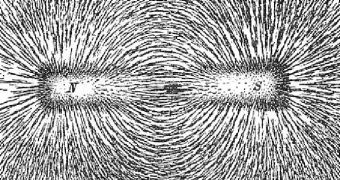Though they initially started out to investigate quirks in superconductors, two researchers ended up demonstrating how the most high-tech materials can shed more light on a common phenomenon.
The interplay between electricity and magnetism has been discovered about two centuries ago, and has ever since developed continuously. In a sense, it's these connections that underlie the modern world.
But, while the large-scale effects of electromagnetism are fairly well understood and used, the small-scale phenomena that lead to its appearance are still a mystery to physicists.
The way electrons interact to underlie this universal force have yet to be understood, until recently.
Rice University theoretical physicist Qimiao Si and graduate student Seiji Yamamoto were investigating superconductivity, when they created a model that may account for electromagnetism.
In a paper appearing in the latest issue of the esteemed journal Proceedings of the National Academy of Sciences (PNAS), the team details its new conceptual model.
It was initially created to explain the quantum quirks of high-temperature superconductors and other high-tech materials, but it eventually explained the origins of ferromagnetism. This is the type of “magnetism” common elements such as refrigerator magnets display.
“As a theorist, you strive to have exact solutions, and even though our new model is purely theoretical, it does produce results that match what's observed in the real world,” says Si, who is also the lead author of the new PNAS paper.
“In that sense, it is reassuring to have designed a model system in which ferromagnetism is allowed,” he explains further.
The expert adds that ferromagnets are in fact permanent magnets, the way everyone knows and loves them.
“When we started on this project, we were aware of the surprising lack of theoretical progress that had been made on metallic ferromagnetism,” Si adds,
“Even a seemingly simple question, like why an everyday refrigerator magnet forms out of electrons that interact with each other, has no rigorous answer,” he explains further.
Funding for the new research effort came from the US National Science Foundation (NSF) and the Welch Foundation, the experts write in their paper.
“The model is useful because it allows us to predict how real-world materials might behave under a specific set of circumstances,” Yamamoto says.
“And, in fact, we have been able to use it to explain experimental observations on heavy fermion metals, including both the antiferromagnets as well as the less well understood ferromagnetic materials,” he concludes.

 14 DAY TRIAL //
14 DAY TRIAL //